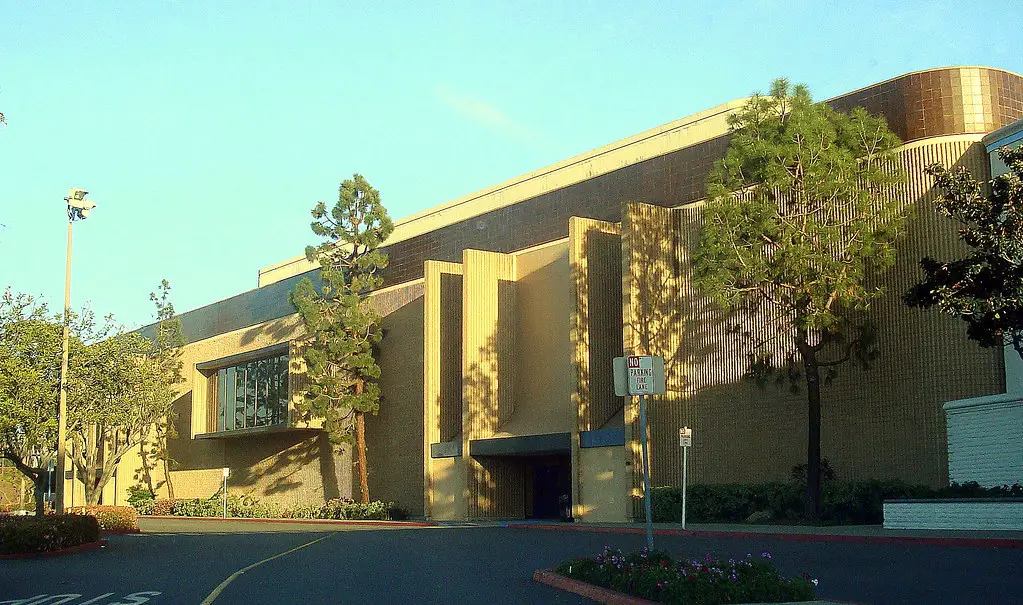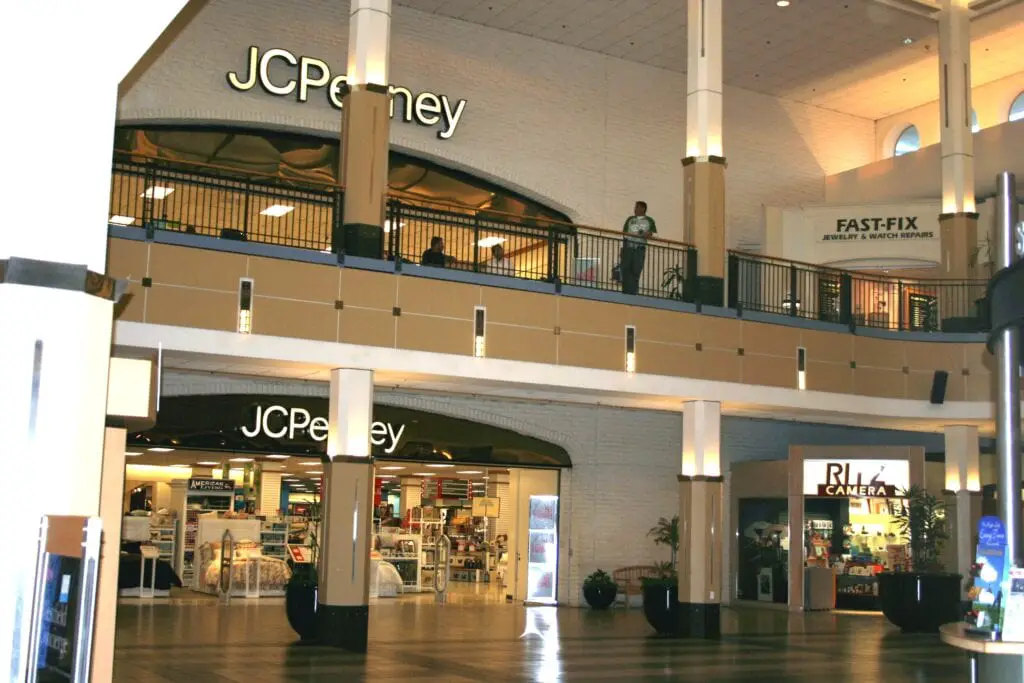Early History and Development
The Shoppes at Carlsbad, originally named Plaza Camino Real, opened in 1969. May Centers, Inc. developed this enclosed regional shopping center, the sixth mall in San Diego County.
It covered 548,000 leasable square feet and was located 32 miles north of San Diego along Vista Way/California Route 78. The mall's site spanned 90 acres, with some parking extending into Oceanside city limits.
May Company California and J.C. Penney anchored the mall. May Company occupied a two-level, 148,200 sq ft space, while J.C. Penney had a two-level, 154,000 sq ft store.
The first phase of development included 63 stores and a Lower Level F.W. Woolworth. Across Marron Road, the Cinema Plaza opened as San Diego County's first twinplex in August 1969.
Plaza Camino Real was May Centers' second San Diego mall, built in two phases over ten years. The first phase, completed in March 1969, included major retailers and several specialty shops. This early period established the mall as a major retail hub in the region.
For anyone exploring things to do in Carlsbad, California, The Shoppes at Carlsbad remains a key destination. The mall's early development phase laid the foundation for its long-term role in the community.
Expansion in the Late 1970s
In 1979, Plaza Camino Real expanded dramatically. This second phase added 500,000 leasable square feet.
The new section opened with The Broadway, a Los Angeles-based department store. Sears also opened a 148,900 sq ft store, adding more variety to the mall.
The official dedication for this expansion took place on October 24, 1979. The next year, in October 1980, Bullock's opened a 115,000 sq ft store.
With these additions, the mall now offers 1,148,000 leasable square feet, making it the largest shopping center in San Diego County at the time.
The expansion positioned Plaza Camino Real as a leading retail destination. It competed with other North County malls like Escondido Village Mall and North County Fair.
This phase also enhanced the mall's appeal, attracting more shoppers and offering a wider range of stores and services.

Renovations and Changes in the 1980s-1990s
Plaza Camino Real underwent a major renovation in the late 1980s. In 1989, they installed new tile flooring, escalators, and a glass elevator in Penney's Court.
Water fountains adorned the entrances of May Co. and Sears. The Broadway Court featured a unique mechanical clock, adding a modern touch.
The 1990s brought more changes. In 1993, May Company converted to Robinsons-May. In 1996, the Broadway store became Macy's Women's Store.
Bullock's transformed into Macy's Men's and Home Store the same year. These changes reflected the evolving retail landscape and kept the mall current.
In 1994, Australia-based Westfield Holdings acquired the mall. In 1998, they rebranded it as Westfield Shoppingtown Plaza Camino Real. The "Shoppingtown" reference was dropped in June 2005.
These updates aimed to modernize the mall and maintain its status as a premier shopping destination.
Decline and Attempts at Revitalization in the 2000s
The 2000s were challenging for Plaza Camino Real. Robinsons-May closed in March 2006. Steve and Barry's took over the space in September 2006 but shut down by late 2008. These closures left large vacancies that impacted the mall's appeal.
In 2009, Westfield announced a revitalization plan. They aimed to convert the empty Robinsons-May space into a cinema, add a food court, and build new specialty shops.
However, the economic downturn delayed these plans. Westfield focused on renovating other properties like Westfield UTC in San Diego.
Despite these setbacks, the mall housed 148 stores and services by the late 2000s. The owners continued to seek ways to revive the mall, understanding its potential as a retail hub.
This period showed the challenges of maintaining large shopping centers amid changing economic conditions and consumer habits.

Renovation and Rebranding in the 2010s
The 2010s brought new hope for the mall. In January 2013, Westfield revealed a long-delayed renovation plan.
They planned to transform the former Robinsons-May space into a 24 Hour Fitness Super-Sport club and a 12-screen Regal Cinemas theater. These additions aimed to diversify the mall's offerings and attract more visitors.
Westfield rebranded the mall as Westfield Carlsbad. In November 2015, they sold it to Rouse Properties for $170 million.
Rouse Properties renamed it The Shoppes at Carlsbad and began implementing its vision. It aimed to create a one-stop shopping, dining, and entertainment destination.
Brookfield Properties acquired Rouse Properties in 2016. The Shoppes at Carlsbad continued to evolve under new management. In 2019, Sears closed, marking the end of an era.
These years showed how the mall adapted to new retail trends and consumer demands, focusing on offering a comprehensive shopping experience.
The Shoppes at Carlsbad: Recent Developments and Current State
In recent years, The Shoppes at Carlsbad have seen some important changes. Brookfield Properties, which acquired the mall in 2016, has worked to keep it relevant.
In August 2019, they announced that Sears would close in December. This closure was part of a larger plan to shut down 92 Sears stores nationwide.
Brookfield has focused on bringing in new tenants and refreshing the mall's offerings. They introduced a variety of stores and restaurants, aiming to attract more visitors. The mall now features a mix of local and national retailers, providing a diverse shopping experience.
Discussions about the mall's future include potential residential development. The city of Carlsbad is considering converting part of the parking lot into housing.
This idea shows a shift towards mixed-use developments, combining retail and residential spaces to create a more vibrant community hub.
Today, The Shoppes at Carlsbad continues to struggle. The management seeks to adapt to changing consumer preferences and market conditions.
The Shoppes at Carlsbad hosted various events throughout 2023 and into 2024 to engage the local community. These included seasonal celebrations, local vendor markets, and family-friendly activities.
These events help strengthen the mall's role as a community hub, offering more than just shopping opportunities.
